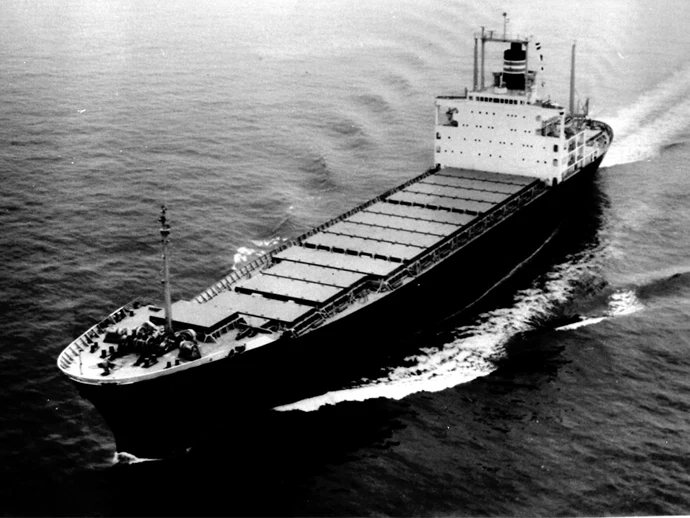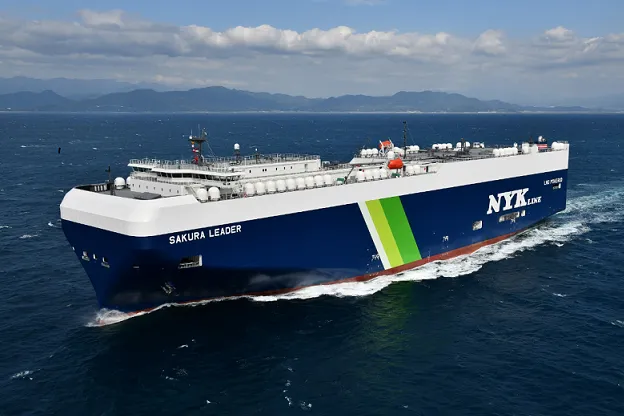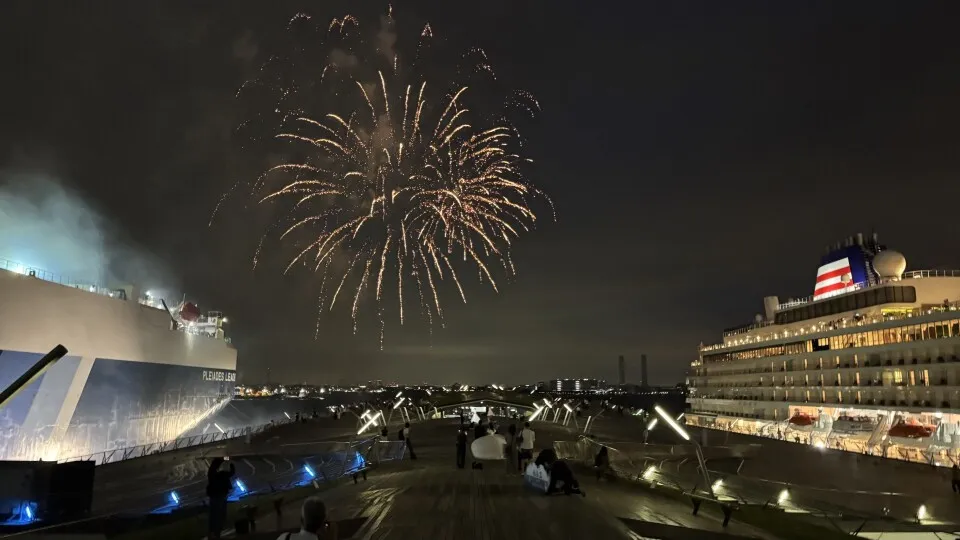NYK Collection: Container Vessels — The Key Players of Maritime Transport in the Global Era
Released : Sep. 12, 2025
Updated : Oct. 20, 2025
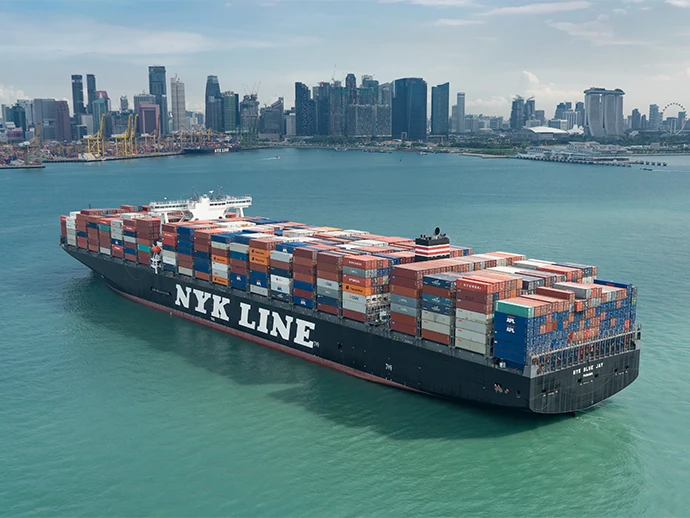
“Bringing value to life.” ── This corporate philosophy of NYK Line is embodied by the many types of vessels that traverse the oceans daily, delivering value across the seas. In this series, “NYK Collection,” we’ll take a closer, more accessible look at the various vessel types that sustain people’s lives and the global economy.
The Key Players of Maritime Transport in the Global Era
Have you ever seen a vessel with stacks of colorful “boxes” on its deck? These boxes are called containers, and the vessels that carry them are aptly named container vessels.
The contents of these containers vary widely — ranging from food products such as meat, seafood, and fresh produce, to clothing, precision machinery, consumer electronics, medical equipment, furniture, and miscellaneous goods. Container vessels transport virtually everything that supports modern life. In Japan, an island nation, it is no exaggeration to say that daily life would be unsustainable without maritime transport via container vessels.
Containers are designed according to international standards, making them highly efficient to stack and organize.
Standard container sizes are 20 or 40 feet long (about 6 or 12 meters), 8.5 feet high (about 2.5 meters), and 8 feet wide (about 2.4 meters). In addition to dry containers made of steel, there are reefer containers for temperature-controlled cargo, and CA containers that regulate oxygen and carbon dioxide levels — ideal for transporting perishables. Open-top containers and flat-rack containers, which lack roofs or side walls, are suitable for oversized cargo. Tank containers are used for transporting liquids such as alcohol and chemicals.
Due to the diversity and volume of cargo, container transport is typically handled through freight forwarders. When cargo volume is low, multiple shipments may be consolidated into a single container.
Container vessel capacity is measured in TEUs (twenty-foot equivalent unit), where one 20-foot container equals one TEU and one 40-foot container equals two TEUs. Today’s ultra-large container vessels (ULCVs) can exceed 20,000 TEUs, while smaller feeder vessels operating between regional ports range from 200 to 1,500 TEUs.
Containerization and NYK’s Journey
The advent of container transport has been described as a "logistics revolution" and even one of the greatest inventions of the 20th century.
In 1955, railways and trucks were used to transport goods such as coal in "boxes." Malcolm Purcell McLean, a truck transportation company owner in the U.S., came up with the revolutionary idea of placing steel containers directly onto vessels after detaching them from trailers.
The world's first container transport was conducted when 58 containers loaded onto the cargo vessel Ideal X were shipped from New Jersey to Texas. In 1966, container transport from the United States to Europe also began.
Before the advent of container transport, loading and discharging cargo onto vessels was manual labor. The work at ports was grueling, and issues such as cargo damage and loss were common. Rain would delay operations. However, the ability to load containers directly onto vessels significantly reduced labor requirements and shortened operation times. Containers could be delivered door-to-door without being opened until they reached the recipient, eliminating concerns about misplacement, loss, or theft.
Port facilities were upgraded to accommodate loading and discharging containers, and logistics networks linking railways and trucks were developed, enabling efficient global distribution of goods. The advent of container technology revolutionized logistics, a shift commonly referred to as containerization.
Containerization ―― In response to this logistics revolution, NYK began researching and studying container vessels.
NYK first focused on containerization along the Pacific route. Following a proposal from the U.S. company Matson Navigation Company, Inc., Japan’s first container vessel, Hakone Maru, jointly operated with Showa Shipping (at the time), commenced service in 1968. This marked the dawn of Japan’s container transport era. NYK subsequently expanded containerization to other major routes, such as the Australia route and the European route.
Hakone Maru, Japan’s first container vessel, was recognized in 2021 by the Japan Society of Naval Architects and Ocean Engineers as "Japan’s first newly built dedicated container ship to achieve efficiency in maritime transport." By incorporating advanced design features for the hull, main engine, and propeller to increase speed, Hakone Maru reduced the round-trip duration for trans-Pacific routes from 80 days to about 30 days, greatly enhancing the efficiency of maritime transport.
An Amazing Vessel Built Just for Container Transport!
Container vessels load containers both on deck and in the hold. Inside the hold, there are structures called cell guides that prevent containers from shifting sideways. These guides extend from the bottom of the hold to just below the deck, enabling efficient loading and discharging along these tracks. Considering factors such as direct sunlight and wave impacts during voyages, some customers prefer to have their cargo stored inside the hold.
Once the hold is fully loaded, hatches are covered, and containers are stacked on deck, where they are firmly secured to prevent cargo from shifting during the voyage. This is achieved using lashing bars, twist locks, and other equipment that connects the containers to each other and to the vessel.
Near the bottom of the bow, a device called a bow thruster is installed. The bow thruster is a propeller used for lateral movement during berthing and unberthing. The bow is maneuvered using the bow thruster, while tugboats assist in positioning the stern.
It is worth noting that loading containers onto container vessels requires specialized container terminals. These terminals feature equipment such as gantry cranes, which resemble long-necked giraffes, among other facilities dedicated to supporting container transport.
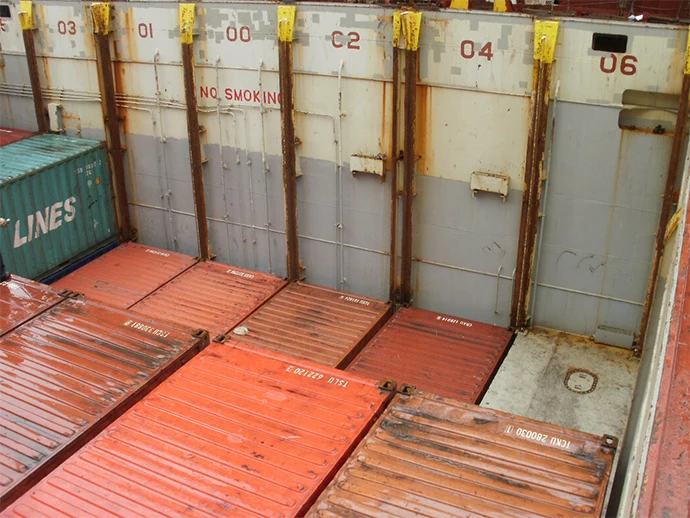
Containers stacked along cell guides
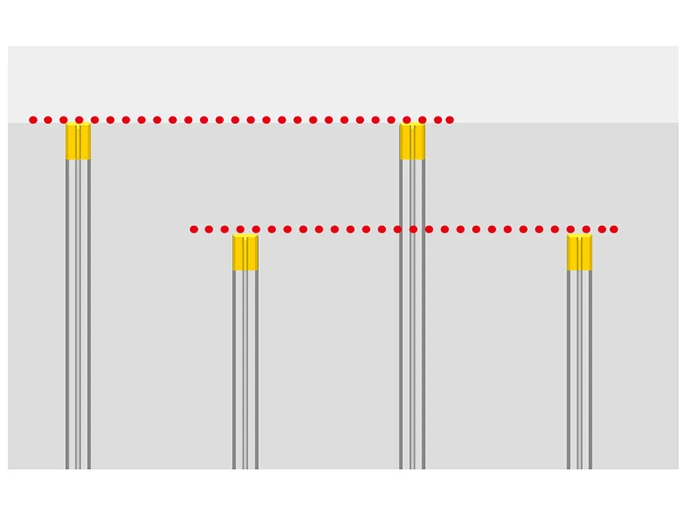
Cell guide heights vary, making loading easier
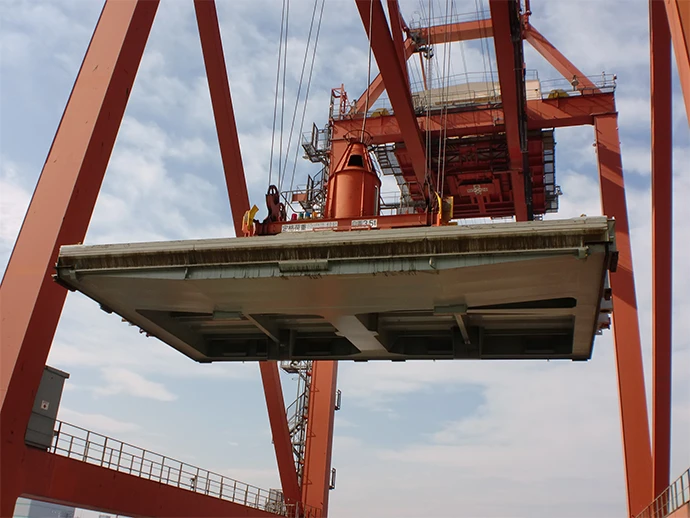
Hatch covers that serve as lids for the hold
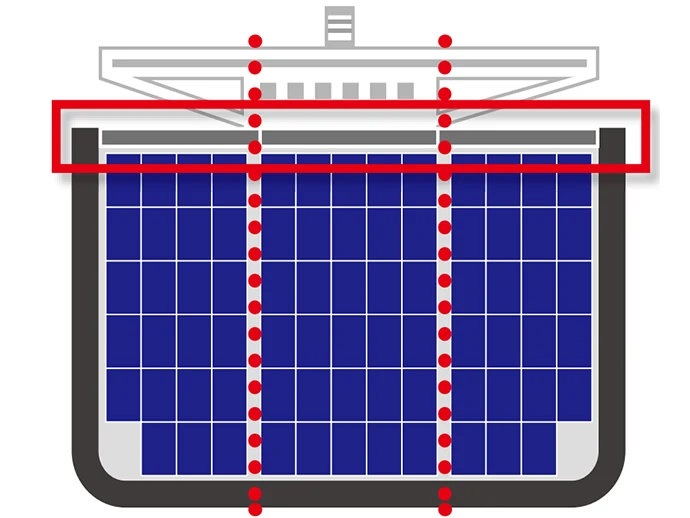
Hatch covers can be opened and closed in sections
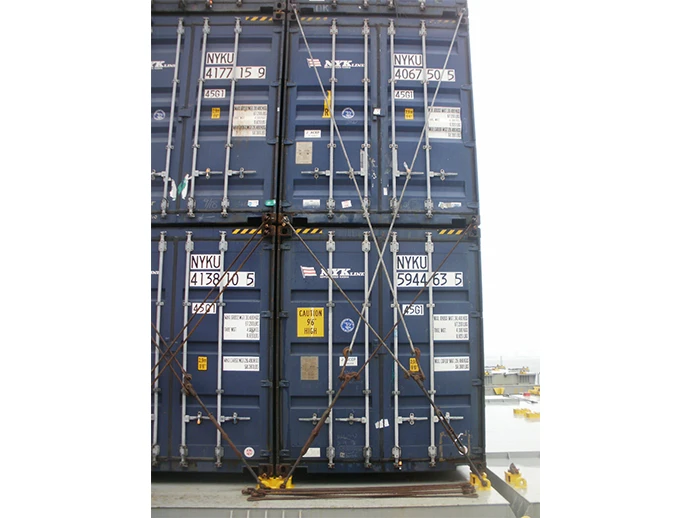
Containers secured with lashing bars
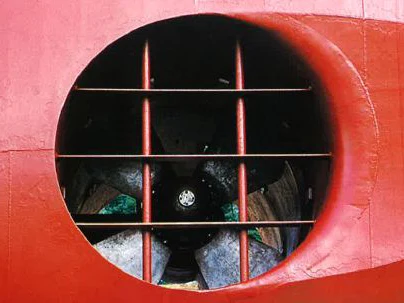
Bow thruster installed near the bow
The World’s Largest Container Vessels Connect the Globe
Loading containers onto container vessels is an extremely meticulous process. Planning is critical — deciding what to load and where to load it.
Specialists meticulously create detailed stowage plans to ensure balanced weight distribution, smooth loading and discharging at multiple ports, and efficient gantry crane operations. These plans are indispensable to the operation. Additionally, strict safety measures are in place for transporting hazardous goods such as explosives and flammable materials.
NYK’s container vessel business continues to evolve.
In 2017, NYK, together with Kawasaki Kisen Kaisha, Ltd. and Mitsui O.S.K. Lines, Ltd., established Ocean Network Express Pte. Ltd. (ONE). In April 2018, ONE launched its regular container vessel operations, and now connects over 120 countries with a fleet of 270 vessels, including 57 ultra-large container vessels with capacities exceeding 13,000 TEUs.
ONE’s fleet is the sixth largest in the world, and among this fleet, the 24,000-TEU-class vessels, one of the largest in the world, built at three shipyards in Japan, are so massive that there are no ports in Japan capable of accommodating them. Without returning to their home country, these giants operate regular routes between major ports worldwide, continuously navigating the arteries of the global maritime network.
Today, container vessels are indispensable to the global economy.
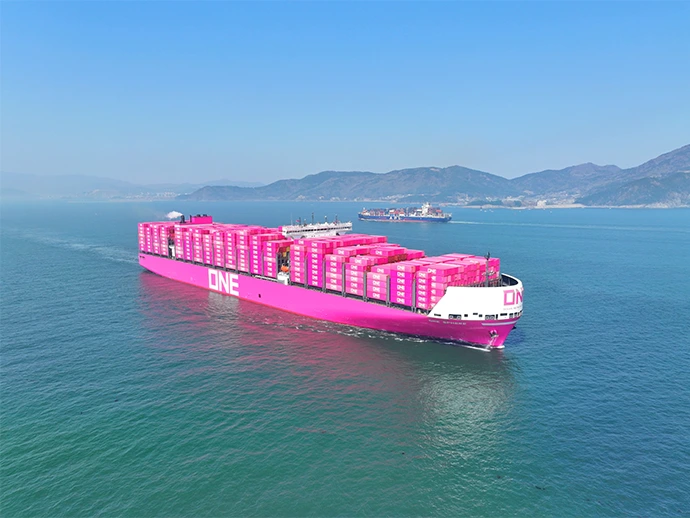
ONE has established a container transport network connecting over 120 countries
